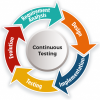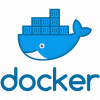Related Content
 |
Continuous Testing Is Not Automation Many people confuse continuous testing with test automation. That makes sense, because you cannot do continuous testing without automated tests. But it is much more. Continuous testing has a higher-level maturity that could require a totally different way of working—but it also gives a faster path to production. |
|
 |
Implementing Continuous Delivery in the Federal Government Federal agencies generally have more regulation, slower processes, and a command-and-control style of bureaucracy. How does it work when trying to foster agility and implement a continuous delivery model? Gene Gotimer relates his experiences and challenges with encouraging a culture change in federal government. |
|
 |
What Aircrews Can Teach DevOps Teams Aircrews learn a set of skills involving a structured way of communicating that breaks down barriers and forces an honest evaluation of the issues. They also automate what they can but still practice their craft over and over again, including what to do during failures. DevOps teams can learn a lot from aircrews. |
|
 |
How Testers Can Use Docker to Shift Left and Automate Deployments Docker has several advantages over virtual machines: It’s easier to deal with, starts up faster, and requires fewer resources. Using Docker also can give testers more confidence in their releases. Developers use the same environment that will be used in production, which streamlines code delivery and shifts QA left. |
|
 |
The Testing Practices and Metrics That Really Matter in Agile and DevOps Scaled agile and DevOps change the game for software testing. It’s not just a matter of accelerating testing; it’s also about fundamentally altering the way we measure quality. The test outcomes required to drive a fully automated release pipeline are dramatically different from the ones most teams measure today. |
|
 |
5 Features of a Successful DevSecOps Pipeline When practicing DevOps, how should you include security? What's the best way to build security into an existing continuous integration, continuous delivery, and continuous deployment pipeline? Let’s take a look at five essential features of successful DevSecOps pipelines and analyze where security can benefit most. |
|
 |
Measuring the Effectiveness of Your Vulnerability Discovery Strategies Trying to prove an app has no vulnerabilities is fraught with challenges, so teams need to choose appropriate strategies for securing apps and ways of measuring whether the time and money spent searching for vulnerabilities is effective. This means understanding how metrics apply to your specific environment. |
|
 |
DevOps and Security: 5 Principles for DevSecOps With the trend toward a more continuous delivery and deployment process, late-lifecycle activities like security assurance present a significant hurdle to continuously delivering value to customers. DevSecOps addresses this by shifting security assurance activities, personnel, and automation closer to development. |








